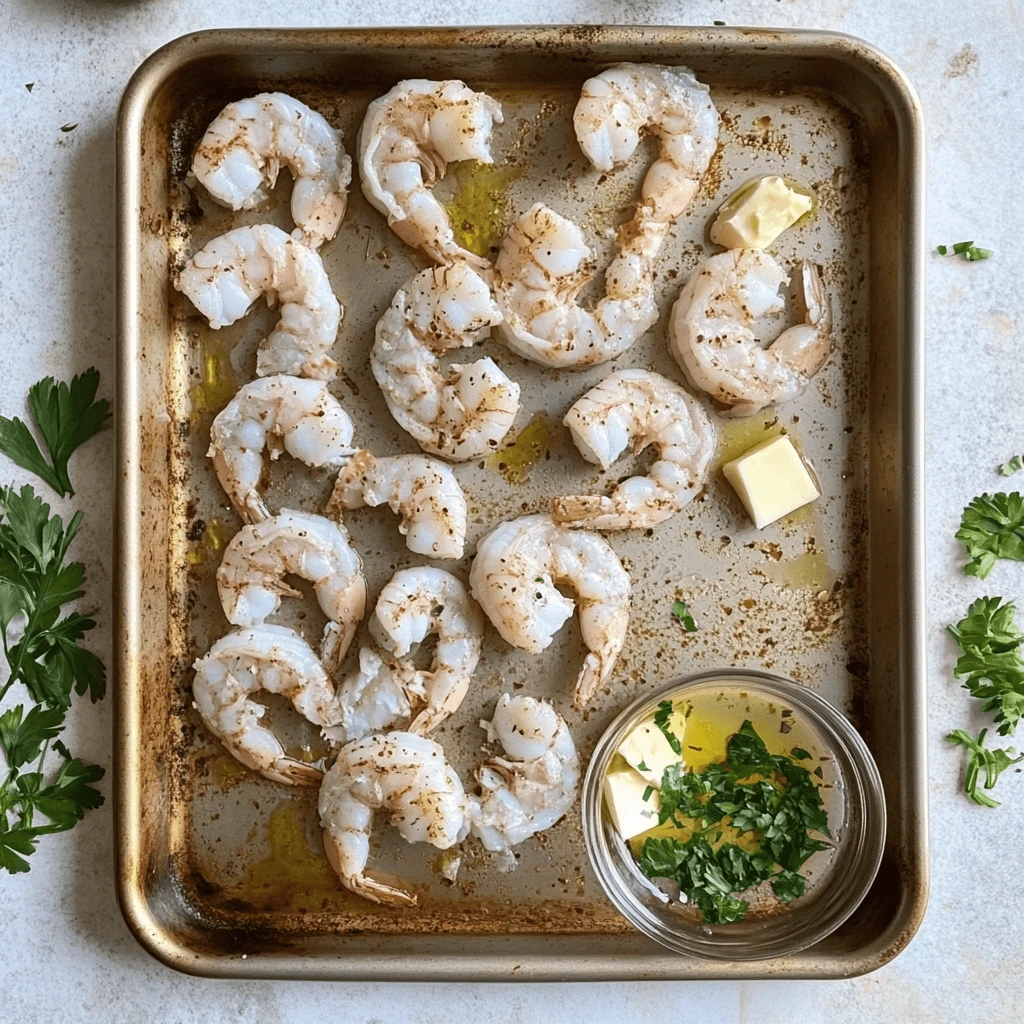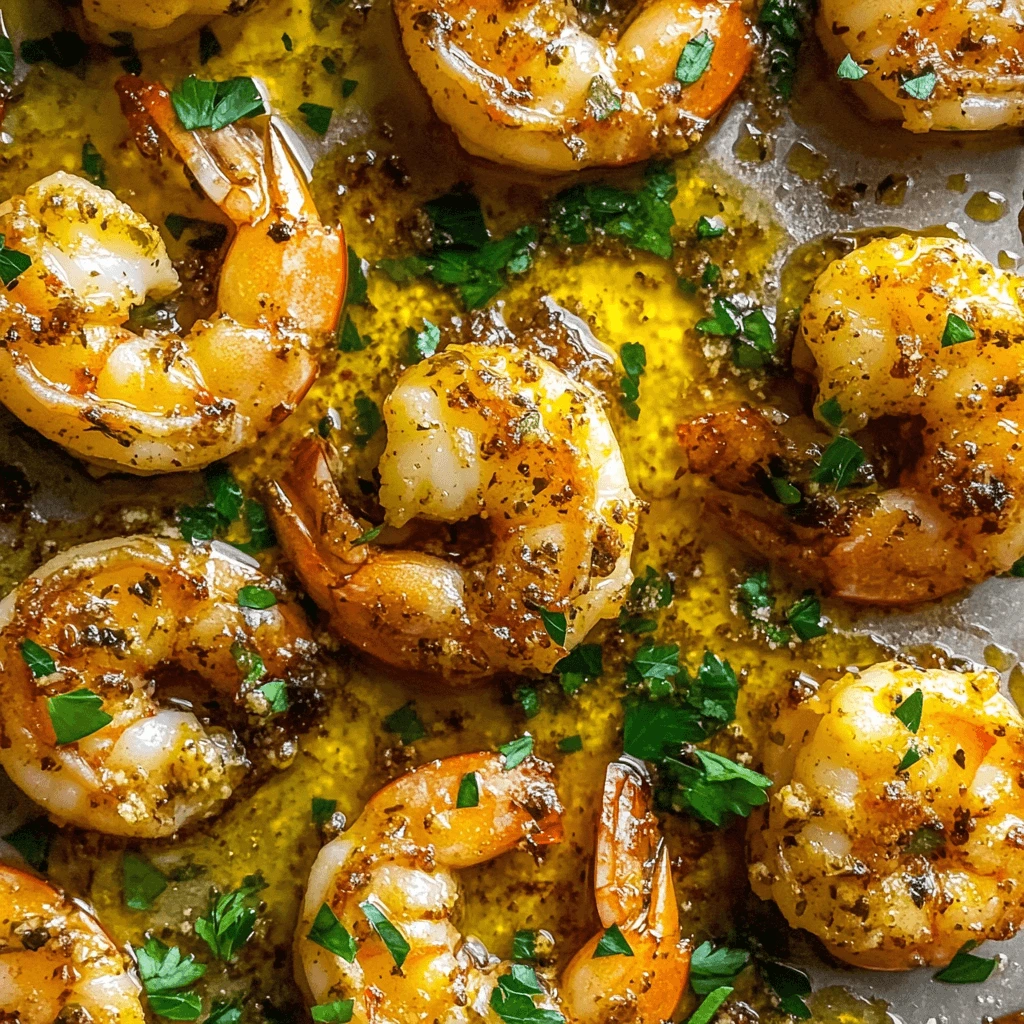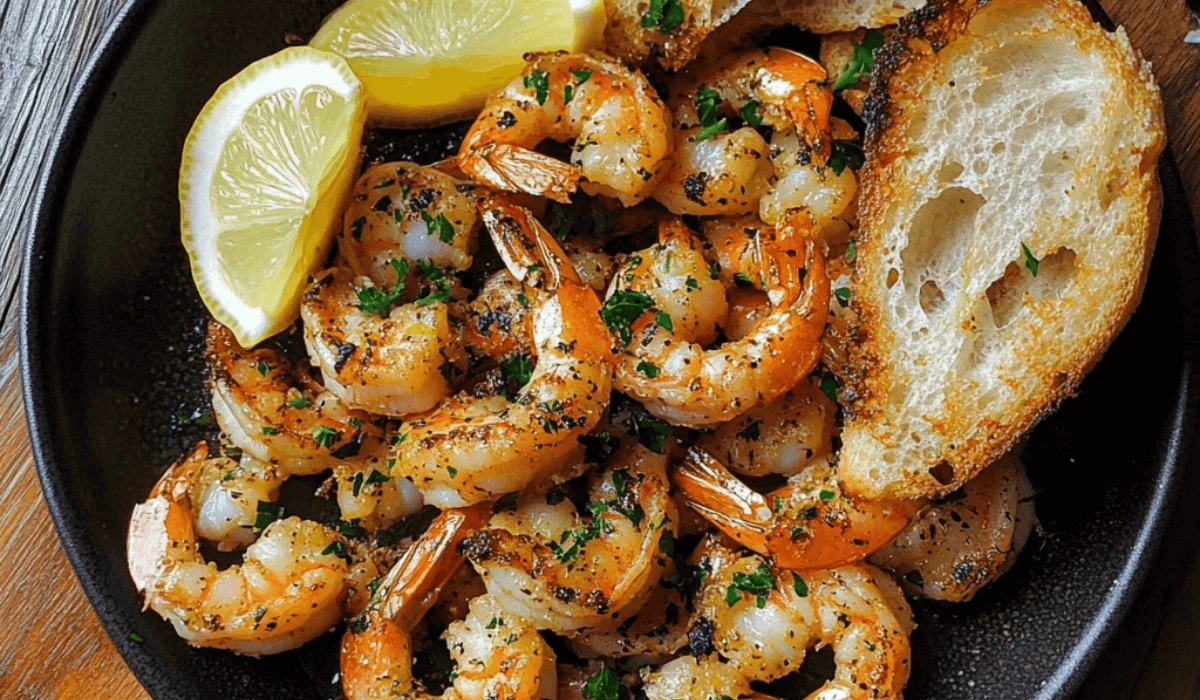Roasted Garlic and Herb Butter Shrimp is a dish that effortlessly combines simplicity and elegance. With tender, juicy shrimp roasted to perfection and coated in a luscious garlic herb butter sauce, this recipe is a guaranteed crowd-pleaser. Whether you’re hosting a dinner party, planning a special date night, or simply craving a cozy, satisfying meal at home, this dish fits the occasion perfectly.
What makes this recipe stand out is its versatility. Serve the shrimp with crusty bread to soak up every drop of the buttery sauce, or pair it with pasta, rice, or a fresh salad for a complete meal. The best part? It’s incredibly quick and easy to make, requiring just a handful of ingredients and minimal prep time. In less than 30 minutes, you’ll have a restaurant-quality dish that’s bursting with flavor and ready to impress.
Get ready to elevate your dinner table with this mouthwatering roasted shrimp recipe—it’s comfort food with a touch of sophistication!
Why You’ll Love This Recipe
- Quick and Easy: This roasted shrimp recipe is perfect for busy weeknights or last-minute dinner parties. With just a handful of ingredients and minimal prep, it comes together in under 20 minutes, making it as convenient as it is delicious.
- Flavor-Packed: Every bite of these shrimp is infused with the rich, savory goodness of garlic and herb butter. The combination of fresh parsley, paprika, and melted butter creates a luxurious flavor that will leave you craving more.
- Versatile: Whether you’re serving this as a crowd-pleasing appetizer, a main dish over pasta or risotto, or as a protein-packed addition to a crisp salad, this recipe adapts to any occasion or menu.
Key Ingredients for Roasted Garlic and Herb Butter Shrimp
- 1 lb (450 g) large shrimp, peeled and deveined
- 3 tablespoons unsalted butter, melted
- 2 cloves garlic, minced
- 1 tablespoon fresh parsley, chopped
- 1 teaspoon dried oregano
- 1/2 teaspoon paprika
- Salt and pepper, to taste

How to Make Roasted Garlic and Herb Butter Shrimp
- Step 1: Prepare the Shrimp
Preheat your oven to 400°F (200°C). This ensures it’s hot and ready when the shrimp go in.
Peel and devein the shrimp, then arrange them in a single layer on a baking sheet.
For easier cleanup, line the sheet with parchment paper or lightly grease it with cooking spray.
Spread the shrimp evenly, leaving space between each piece. This helps them roast uniformly and achieve a golden color.
Step 2: Make the Butter Sauce
In a small bowl, combine:Melted unsalted butter (rich and creamy base).
Minced garlic (for aromatic depth).
Fresh parsley and dried oregano (herby freshness).
Paprika, salt, and pepper (for seasoning).
Mix well until the sauce is smooth and packed with flavor.
Optional: Add a pinch of red pepper flakes for a little heat if desired.
Step 3: Coat and Roast
Drizzle the butter sauce generously over the shrimp.
Use a spoon or brush to coat each piece thoroughly. This locks in moisture and infuses them with flavor.
Place the baking sheet in the oven and roast for 8–10 minutes.The shrimp are ready when they turn pink, opaque, and slightly curled.
Tip: Avoid overcooking, as shrimp can become tough and rubbery.
Step 4: Serve and Enjoy
Transfer the shrimp to a serving dish while they’re still hot.
Garnish with:Freshly chopped parsley for a pop of color.
A squeeze of lemon juice to brighten the flavors.
Pair with:Crusty bread (perfect for dipping into the buttery sauce).
Pasta, rice, or a crisp salad for a complete meal.
Enjoy this quick, flavorful dish that’s elegant enough for guests but easy enough for a weeknight dinner.
Tips for Perfectly Roasted Garlic and Herb Butter Shrimp
- Use Fresh Shrimp: To achieve the most flavorful and tender roasted shrimp, always opt for fresh shrimp when possible. Fresh shrimp not only enhances the overall taste but also ensures the best texture, giving you that juicy bite every time. If fresh shrimp isn’t available, high-quality frozen shrimp is an excellent alternative. Be sure to thaw frozen shrimp properly before cooking by running them under cold water or letting them defrost in the refrigerator. This step prevents uneven cooking and helps the butter sauce adhere better for maximum flavor.
- Don’t Overcook: Shrimp cooks incredibly fast, so it’s essential to keep a close eye on them while roasting. Overcooked shrimp can quickly turn rubbery and lose their natural sweetness, which is a key feature of this dish. As a rule of thumb, shrimp are perfectly cooked when they turn pink, opaque, and curl slightly into a “C” shape. For this recipe, roasting at 400°F (200°C) for about 8–10 minutes will achieve optimal results. Checking them frequently during cooking ensures you pull them out of the oven at just the right time for juicy, tender shrimp every single time.
- Add Heat: For those who love a bit of spice, adding a pinch of red pepper flakes to the garlic herb butter sauce is a simple yet impactful way to elevate the flavor profile. The subtle heat from the flakes complements the rich, buttery sauce and enhances the natural sweetness of the shrimp. Start with a small pinch and adjust to your spice tolerance—you can always add more for a bolder kick. This optional ingredient adds depth and balance, making the dish even more enticing for spice enthusiasts.

Serving Suggestion
- Serve Over Creamy Linguine or Risotto
- Transform this dish into a comforting main course by pairing the roasted garlic and herb butter shrimp with creamy linguine or risotto. The rich, buttery sauce coats the pasta or rice beautifully, creating a decadent, restaurant-quality meal.
- Pair with Crusty Bread
- Use warm, crusty bread to soak up every last drop of the flavorful garlic herb butter sauce. Whether it’s a fresh baguette or rustic sourdough, this side adds texture and makes the dish even more satisfying.
- Add to a Fresh Salad
- For a lighter option, serve the shrimp over a crisp salad of mixed greens, cherry tomatoes, cucumbers, and a simple vinaigrette. This refreshing pairing balances the richness of the shrimp and makes for a healthy yet elegant meal.
Storage and Reheating Tips for Roasted Garlic Butter Shrimp
- To Store: Keep leftovers in an airtight container in the refrigerator for up to 2 days.
- Use a Skillet for Gentle Heating: Place the leftover shrimp in a skillet over low heat and warm them gently. This method helps retain their juicy texture and prevents overcooking, which can make shrimp rubbery. Adding a small splash of water or butter to the skillet can help revive the sauce and keep the shrimp moist as they reheat.
- Microwave Option: If you’re in a hurry, you can reheat the shrimp in the microwave. Place them in a microwave-safe dish, cover with a damp paper towel, and heat in 20–30 second intervals. Be sure to check frequently to avoid overcooking.
- Oven Method for Larger Quantities: For reheating a larger batch, preheat your oven to 300°F (150°C). Spread the shrimp on a baking sheet and cover with aluminum foil to retain moisture. Heat for about 5–7 minutes or until warmed through.
FAQ
What’s the tastiest way to cook shrimp?
The tastiest way to cook shrimp depends on your flavor preferences and the recipe. Roasting shrimp in a garlic herb butter sauce, like in this recipe, is an excellent choice because it enhances the natural sweetness of the shrimp while infusing it with rich, savory flavors. Grilling shrimp with a marinade, pan-searing for a crispy texture, or cooking it in a spicy broth for dishes like shrimp curry are other delicious options. The key is to not overcook the shrimp and to use complementary seasonings and sauces.
Can you put frozen shrimp straight in the oven?
Yes, you can cook frozen shrimp directly in the oven, but it’s recommended to thaw them first for even cooking and better flavor absorption. If you’re short on time, you can rinse the shrimp under cold water to quickly thaw them. Cooking shrimp straight from frozen may result in a slightly watery texture and uneven seasoning, as the butter or spices may not stick as well. If you do decide to cook frozen shrimp, add a few extra minutes to the roasting time and pat them dry before adding seasonings.
Is it better to cook shrimp in butter or olive oil?
Both butter and olive oil have their advantages when cooking shrimp, and the choice depends on the flavor and texture you want to achieve. Cooking shrimp in butter gives them a rich, creamy flavor that’s perfect for recipes like garlic butter shrimp. Butter also browns nicely, adding a slightly nutty taste to the dish. Olive oil, on the other hand, is a healthier option and works well for high-heat cooking, as it has a higher smoke point than butter. For a balanced approach, you can combine the two, using olive oil to sauté the shrimp and butter at the end for added richness.

